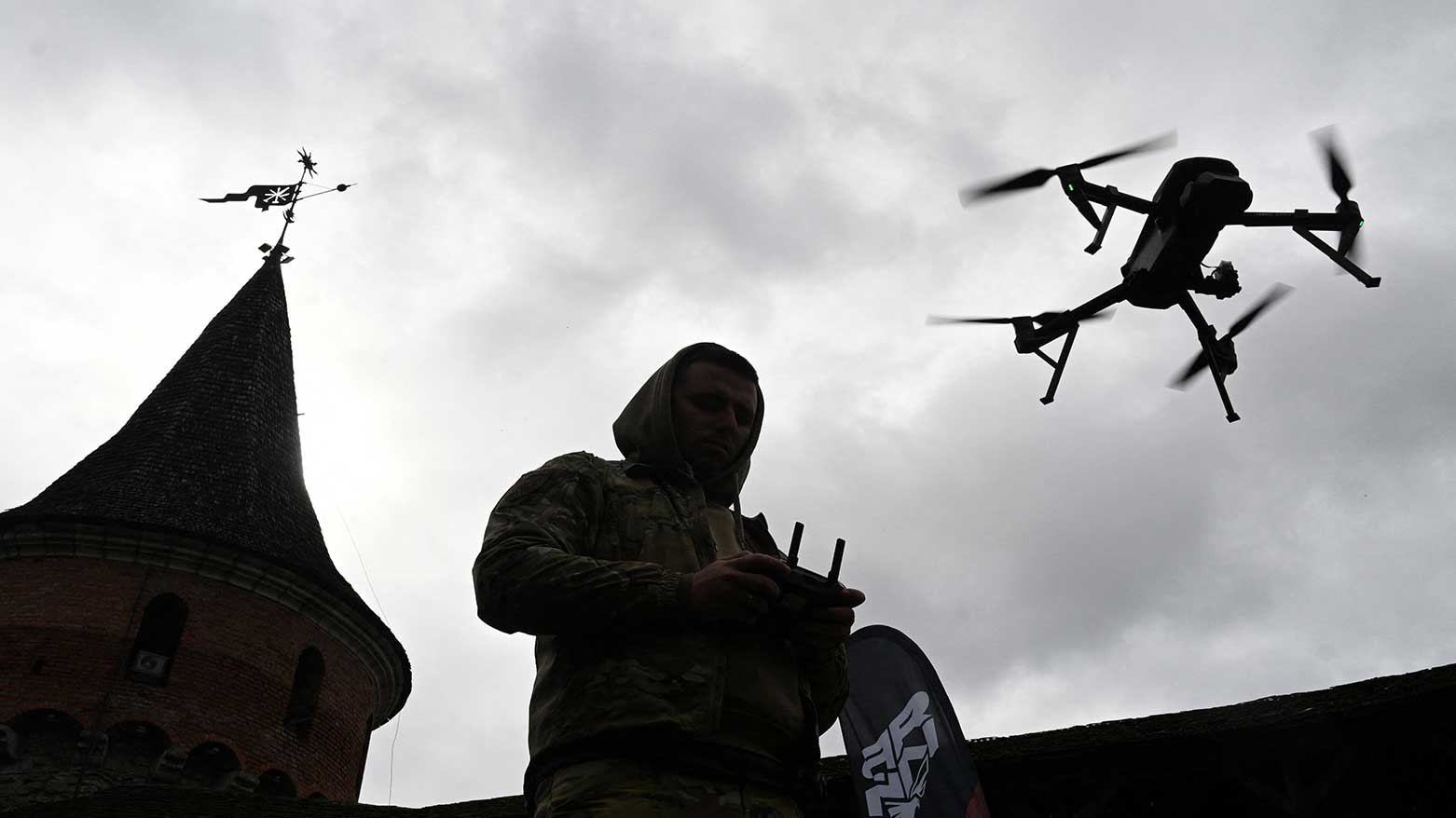Ukraine Launches Major Drone Strikes on Russia Amid Energy Battles
Ukraine’s intensified attacks on Russian energy infrastructure come amid stalled ceasefire talks, rising fears of nuclear escalation, and unexplained drone sightings over NATO military bases in Europe.

ERBIL (Kurdistan24) — Russia reported that a Ukrainian drone barrage overnight triggered widespread power cuts in the Belgorod border region, marking one of Kyiv’s largest attacks on Russian territory since the conflict began in February 2022. The strike left thousands without electricity and caused a partial blackout in 24 settlements affecting more than 5,400 residents, Belgorod Governor Vyacheslav Gladkov said on social media.
A refinery in the southern Krasnodar region was also targeted, injuring two people, while Russia claimed to have downed 251 Ukrainian drones during the assault — one of the highest daily tolls reported in the war.
Kyiv has vowed to intensify its strikes on Russian soil, particularly targeting oil infrastructure, which it sees as a legitimate retaliation against Moscow’s daily attacks on Ukrainian cities and energy networks.
Russia, in turn, launched 116 drones into Ukraine, hitting an energy facility in the Chernihiv region and killing a woman in Kherson. Officials in Ukraine said Moscow is deliberately targeting the country’s power grid, repeating tactics that previously left millions without heating during sub-zero winters.
Kyiv’s retaliatory strikes have also triggered fuel shortages in several Russian regions and driven up petrol prices, as Ukraine aims to cut off energy revenues that fund Russia’s military operations.
The drone attacks come amid growing unease across Europe, following reports of unidentified drones over military bases in Denmark and Belgium. Authorities in both countries have not publicly disclosed the origin of the drones, but suspect Russia may be involved.
These incidents underscore the wider security implications of the Ukraine war, signaling the conflict’s potential spillover into NATO territories and raising concerns about the vulnerability of Western military infrastructure.
Military experts warn that these developments could accelerate European nations’ defense coordination and heighten calls for stronger deterrence measures.
The escalation in drone attacks coincides with renewed tensions in U.S.-Russia relations. U.S. President Donald Trump, speaking on the conflict, said he hopes the United States will not need to resort to nuclear weapons following perceived Russian threats — remarks that highlight the precarious nature of global nuclear rhetoric and the high stakes of miscalculation.
Adding to the uncertainty, Trump’s brokered talks between Moscow and Kyiv aimed at achieving a ceasefire collapsed, leaving the possibility of negotiated peace further out of reach.
Observers suggest that the failure of these negotiations, combined with Ukraine’s intensifying attacks on Russian energy infrastructure, signals a protracted and increasingly destructive phase of the war.
Experts argue that Ukraine’s focus on Russian oil and energy infrastructure is a calculated effort to disrupt Moscow’s military financing, while Russia’s relentless drone attacks on Ukraine’s power grid are intended to undermine civilian morale and winter preparedness.
The resulting energy shortages and humanitarian strains illustrate the conflict’s asymmetrical dimension, where both sides seek leverage through civilian-targeted infrastructure.
Meanwhile, the appearance of drones over NATO member states’ military bases adds an unsettling layer of complexity. While direct responsibility remains unconfirmed, analysts warn these incursions could lead to miscalculations that escalate the war beyond Ukraine’s borders.
European governments are closely monitoring the situation, with defense and intelligence agencies urging heightened vigilance.
As the war enters its fourth year, the combination of intensified drone attacks, energy-targeted strikes, and stalled diplomatic negotiations underscores that the Ukraine conflict is far from resolving, with reverberations that extend far beyond Eastern Europe.

